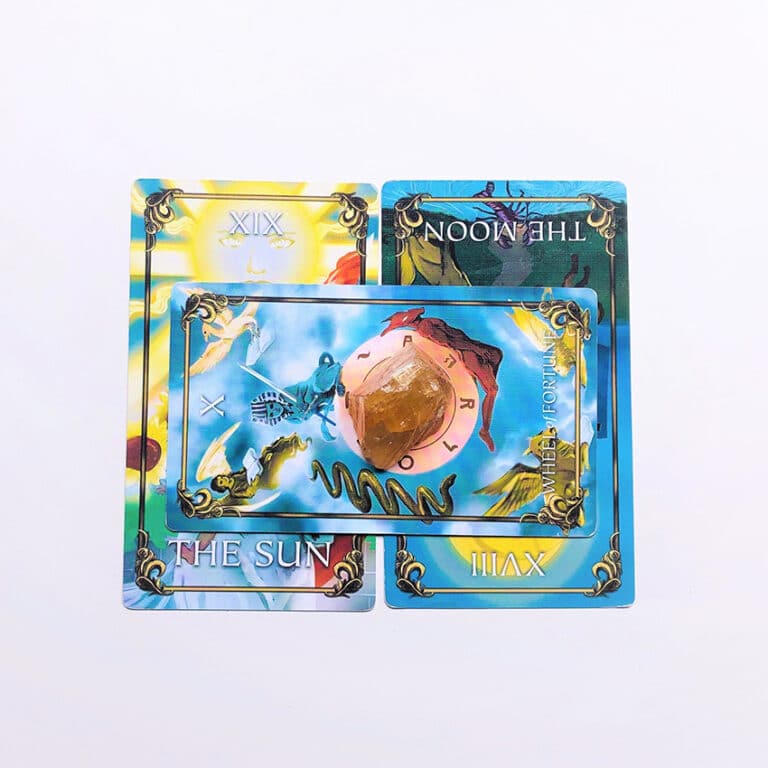It’s no secret that asking the Tarot yes or no questions can be difficult, but it’s unfortunately also no secret that it is likely one of the first things you might try as a new reader or a curious querent. We all might know that a strong question is likely to yield strong results from Tarot, but sometimes it’s a simple yes or no that you’re looking for.
Sure, sometimes you may be interested in how you can go about landing that shiny new job opportunity, but sometimes you also just want to know whether or not you’ll get it and are seeking a simple yes/no answer!
We’ve broken down how yes or no tarot questions and readings might work so you can see what methods to conducting them are at your disposal.
How Yes or No Questions & Tarot Work:
When asking Tarot a yes or no question, you may find yourself stuck at a standstill and confused with your answer. Why? Because Tarot itself is inherently meant to break down intricate situations, give complex guidance, and convey larger worldly and interpersonal themes — and not necessarily simplify your answer into one word.
This doesn’t mean conducting yes or no Tarot readings is impossible, but it can definitely make it a tricky deal. When you ask Tarot a yes or no question, be prepared for the possibility of confusion. For example, you might ask Tarot if you’ll run into love within the next few days, only to receive Temperance. This could mean, “Yes, if you’re patient and maintain a balanced routine,” or, “No, you need to be more patient” depending on how you interpret the card.
For this reason, we’ve prepared a few methods and spreads that you can try instead of blindly asking Tarot your yes/no question, only to be mystified by its response!
Yes/No Tarot Spreads & Methods
1. Reversed cards mean “no.”
A simple way to receiving “yes or no” answers is to ask your yes or no question and take all reversed cards as “no” and upright cards as a “yes.”
For example:
Question: Will I be married within the next 10 years?
Card: 10 of Wands (Reversed)
This would mean “no” from your Tarot deck, as the card is reversed. At this point, it is up to you whether or not you want to take the actual card into consideration. With this example, you might interpret 10 of Wands, a card of stress and burdens in reversed position, to mean, “No, because you need to release your burdens and stress first.” On the flipside, you can also ask the “why?” question afterwards, and pull a new card.
2. It’s all in the suits!
In this method, you will separate all the Major Arcana from the Minor Arcana and put the Major Arcana aside (you won’t be needing them here!).
Interpret Wands and Swords (suits of action and movement) as “yes” and Cups and Pentacles as “no.”
Your reading would then, for example, be interpreted like so:
Question: Should I move to another state?
Card: 3 of Wands
In this reading, as you pulled a card from the suit of Wands, your answer would be “yes.” If you want to take the card into consideration, that is again up to you. Here, you could interpret the 3 of Wands to mean that it may be a long journey ahead, but it’ll be a good decision to move overall.
Review: A Guide to the 4 Tarot Suits – Cups, Wands, Swords & Pentacles
3. Assign your own significance to the cards beforehand.
If you’re not a fan of the suits method and want to keep your cards altogether, you can still try this method instead! One of the reasons that yes or no answers can be confusing is when you’re not totally sure what cards mean “yes” and which ones are handing out a “no.” To avoid this, you can assign yes/no values to the cards yourself beforehand in a journal or on a piece of paper to reference later. It is best to assign them based on what makes sense to you personally so that you can remember them more naturally, as well as understand the intensity of the yes or no on your own.
For example:
Question: Am I going to land the job?
Card: The Devil
To us, The Devil is a card that we would associate with a “no,” being a card of negativity and pain. Therefore, we would interpret this response as a solid “no.”
While this one is simple, the most important part when conducting this method is to assign each card the yes/no value prior to doing any readings so that you’re completely sure what your deck is trying to tell you. If your interpretation of whether a card means yes or no is different to someone else’s, that’s okay! It’s still important to remain solid in your stance to avoid any confusion when you see the card.
QUIZ: Which Tarot Card Are You?
In Conclusion…
While yes/no Tarot questions are difficult to understand at times, they’re definitely not impossible. It may take a bit more work in deciding what method works for you, if any, and whether or not this style of Tarot reading is something you enjoy. If not, that’s okay too, and you can always go back to any classic Tarot spread to get the in-depth answer you’re used to receiving!
Related Article: Tarot Significators – What They Are & How To Use Them
